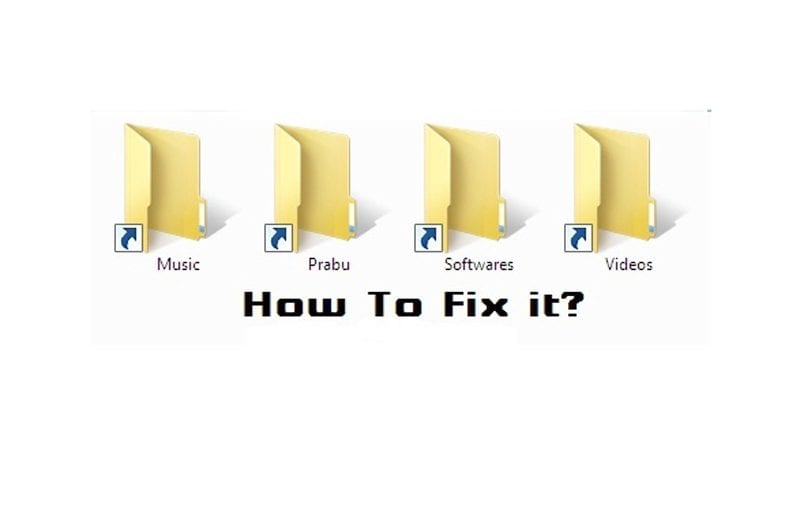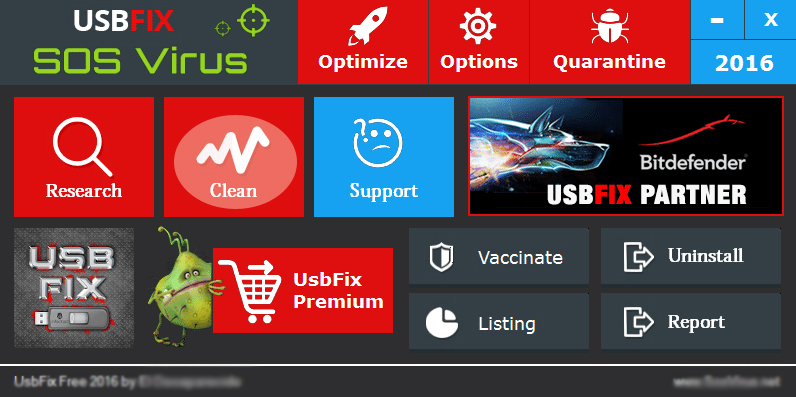Remove Shortcut Virus From Usb
Summary
When the shortcut virus infects a device, all the files therein become inaccessible. To access your files, you can remove the shortcut virus from your USB drive, pen drive, or SD card using cmd. This method is preferred over formatting the device and losing all files. If the virus or removal process resulted in some data loss, you can get your files back with data recovery software.
The Shortcut Virus
The shortcut virus is a frustrating piece of malware that replaces all files in a storage device with shortcuts. These shortcuts have the same names as the files, but the files are inaccessible. In fact, when you click the shortcuts, the virus only embeds itself deeper into the storage device. Your USB hard drive, SD card, hard drive, or other devices become infected with the shortcut virus when they are connected to another device that already has the virus. Additionally, in the case of a computer's hard drive, it can become infected by running a .exe file that contains the virus.
How to use UsbFix to Remove the Shortcut Virus from Your USB storage device. Download UsbFix Software on your computer, you can download the software by clicking HERE. Install and restart your computer. Connect Your USB Device which contains the shortcut or any other. In this article, we’ll show you how you can remove the shortcut virus using the command prompt and safeguard your computer from future attacks. What Is AutoRun? To understand what a shortcut virus is, you need to know what AutoRun does and why it does it.
Shortcut Virus Removal with Command Prompt
In order to access your files on an infected device, you should first remove the shortcut virus from the USB drive, SD card, or hard drive. Formatting is a simple method to clean out the shortcut virus, but you will lose all of the data on your device. Fortunately, there is another relatively simple method that will allow you to remove the shortcut virus completely for free—using the Windows built-in Command Prompt (cmd).
By using cmd, you can completely remove the shortcut virus from a USB flash drive, SD card, or other removable storage devices. If your computer’s hard drive is also infected with the shortcut virus, you can use this method to get rid of the virus files, but must additionally remove shortcut virus processes from the registry to prevent the virus from reappearing. Permanently removing the shortcut virus from a computer hard drive is covered in an associated article.
Remove Shortcut Virus from Removable Storage Devices with cmd
- Warning
- Be careful when using cmd. If you are not sure how to operate the command line, only enter commands from trusted sources. Improper use of cmd can result in serious damage to your system.
Remove Shortcut Virus From Pc
- Step 1: Right-click on 'Start' and select 'Command Prompt (Admin)'.
- Step 2: Sign in with your administrator account and password if the system asks.
- Step 3: Type: attrib -h - r -s /s /d D:*.* and hit Enter. (Replace D: with the drive letter of your infected device).
- Step 4: Type: del autorun.inf and hit Enter.

If this didn’t work, you are likely infected by another virus. Replace autorun.inf with another virus extension such as *.ink or *.exe to delete these suspicious files.
By now, you should have successfully removed the shortcut virus from your USB flash drive, pen drive, or SD card using cmd. This method is preferred over formatting your device because it can get rid of the virus without wiping all of your files. But using cmd in this manner can sometimes result in minor data loss, so it is recommended to check your device for any missing files. This process is made easy by using automated data recovery software to scan your device and locate deleted files.
Supplemental: recover data after removing shortcut virus
EaseUS file recovery software scans deep into the data blocks of your storage device and locates any recoverable files that were lost due to deletion, formatting, or other errors. The scan is completely free, so you have nothing to lose by checking your drive for missing files. You’ll be able to view all recoverable files and preview the quality of the data before recovering. In fact, if you only have a small number of lost files, you can recover them for free with EaseUS Data Recovery Wizard Free.
Step 1: Launch EaseUS Data Recovery Wizard.
Select the disk partition or storage location where you lost files and click 'Scan'.
Step 2: EaseUS Data Recovery Wizard will start a scanning process to find lost files.
The scanning process will automatically start to find all of the files.
Step 3: Preview and restore lost files.
You can filter scan results by file type, select found files and click 'Recover' to get them back. You should save the files to another safe spot in your PC/storage device, not where they were lost from.
A computer virus can come from just aboutanywhere — even removable storage devices. When an infected USB flash drivefinds its way to your PC, it will be activated thanks to a built-in Windowsfunction called AutoRun.
Fortunately, there is a way to disablethe feature.
In this article, we’ll show you how youcan remove the shortcut virus using the command prompt and safeguard yourcomputer from future attacks.
What Is AutoRun?
To understand what a shortcut virus is,you need to know what AutoRun does and why it does it.
Windows launches a file calledautorun.inf when external devices (USB, memory card, CDs, DVDs, SD cards) areplugged into the computer. Features like AutoRun are designed to improve the PCexperience.
In most cases, they aid non-technical usersby automatically launching applications found on external devices like pendrives instead of having them manually navigate important files and folders.
The best example would be the installation CDs that come with the programs you purchase. Each CD would likely have an autorun.inf file so the installer would launch as soon as you insert the CD in your computer.
Make sure to read my previous post on the difference between autorun and autoplay, which are similar, but different.
How Does a Shortcut Virus Work?

Unfortunately, the AutoRun feature hadbeen abused by some malicious people. A virus from USB flash can now be attachedto autorun.inf so both would launch at the same time. This means you’reessentially installing a virus the second you plug in your USB.
What the virus does would depend on whatit’s been programmed to do. Some are known to add what’s called a keylogger toyour system. This would allow hackers to track your keystrokes to stealpersonal information like passwords and banking information.
Disabling AutoRun
While AutoRun is a great feature,disabling it might be the best way to prevent infected autorun.inf files fromdoing damage.
Here are the steps you should follow todisable Windows AutoRun:
Go to Settings (Windows + I) > Devices> AutoPlay.
Disable AutoPlay by switching the toggleto the Off position.
Note: You can also use the drop-down menu to select the default actionwhenever you insert an external device.
Deleting the Autorun.inf File
If you suspect that your USB drive has avirus, deleting the autorun.inf file will prevent the virus from launching.
Delete Using CMD
Here’s how to delete the autorun.inf fileby running CMD otherwise known as the command prompt:
Open Runand type CMD to open the CommandPrompt.
Enter the USB drive letter (example: “G:” or “F:” without the quotation marks) and press Enter.
Type ATTRIBUTE-H -R -S AUTORUN.INF in the command line then press Enter.
Type DELAUTORUN.INF and press Enter.
Delete Using Windows Explorer
Here’s how todelete the autorun.inf file using Windows Explorer:
Launch Windows Explorer (Windows + E).
Open the USBdrive found on the left-hand side panel. This action will show you the contentof the USB.
Select autorun.inf from the list and pressDelete.
Note: Autorun.inf is usually ahidden file. Make sure you have Show Hidden Files enabled by going to View and ticking Hidden Items.
Deleting theautorun.inf file through either method should help keep your computer safe frommalicious virus. However, you should use an antivirus software to scan your USBdrive for malware immediately after as an added security measure.